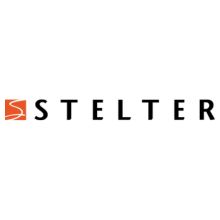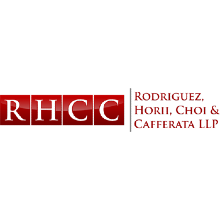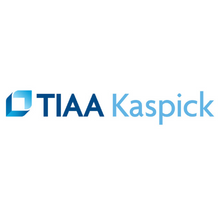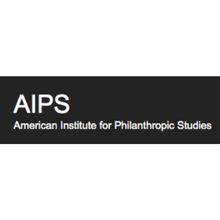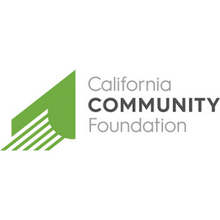- Home
- About Us
- Membership
- Events
- Conference
- Sponsors
- Resource Center
Legislative UpdatesDecember 28, 2022 THE HOUSE AND SENATE PASSED THE SECURE 2.0 ACT INCREASING BENEFITS FOR RETIREMENT ACCOUNTS As you may have heard, the Consolidated Appropriations Act of 2023 (H.R. 2617), the $1.7 trillion federal spending bill was passed by both the House and the Senate. President Biden is expected to sign the bill into law before the December 30th deadline. Included in that budget bill is the bipartisan retirement savings legislative, the Secure 2.0 Act which expands benefits for retirement savings. What does this mean for you? Increased Age for RMDs The Secure 2.0 Act will increase the age you must take your Required Minimum Distribution (RMD) from 72 to 73 years old starting on January 1, 2023, so long as you are not 72 years old on or before December 31, 2022. The Act increases the age to 75 on January 1, 2033. Qualified Charitable Distributions Will Be Indexed for Inflation As you may be aware, if you are over 70.5 years old, you may make a donation directly to a charity, and it will not be included in your adjusted gross income. It will also count against your required minimum distribution. This type of donation, the qualified charitable distribution (QCD) or IRA charitable rollover is currently limited to $100,000 per year. It will be indexed for inflation beginning in 2024 Tax Advantage Gift from IRA to Split Interest Gift Such as a Charitable Gift Annuity The Act will allow a one-time gift from your IRA to a split interest account such as a charitable gift annuity or charitable remainder trust of $50,000. The gift will be considered a QCD. Higher Catch-Up Contribution Limit Currently if you are 50 years or older you can make catch up contributions to your retirement plan. In 2023 that amount is an additional contribution of $7,500. The Secure 2.0 Act will permit an increase in the amount you can contribute to your retirement plan beginning in 2025 to the greater of $10,000 or 50% more than the regular catch-up amount if you are between 60 and 63 years old. Those increased contribution limits would also be indexed with inflation starting in 2025. Penalty Tax for Missed RMD Will Be Reduced Under the new Act, if you miss your RMD in a calendar year, the penalty tax will be 25%, rather than the 50% tax in prior years. Moreover, if you correct the missed RMD in a timely fashion, the penalty tax will be reduced to only 10%. Section 529 Plans May Rollover to Roth IRAs If you have a 529 plan, typically used for college savings, and it is no longer needed, you may rollover up to $35,000 into a Roth IRA for your own benefit. Emergency Expense Distributions Starting in 2024, the Secure 2.0 Act will allow you to take emergency distributions from their retirement account to cover unforeseeable financial needs. The distribution can only be taken once per year. No penalty tax will be owed for the distribution, but if the amount is not repaid within a certain timeframe, you will not be permitted to take another emergency distribution for a period of three years. This is exciting news and offers expanded benefits to those in their retirement years. Cynthia Hizami, Esq. December 9, 2022 2022 seems to have flown by. We are coming up on the last CGP Advocacy Update of the year offered by the National Association of Charitable Gift Planners. Registration is free and you can register by clicking on this link. Join the Update where I am sure we will be discussing the Secure 2.0 Act, among other topics! Cynthia Hizami, Esq. August 23, 2022 The National Association of Charitable Gift Planners recently hosted its August 2022 Advocacy Update with Tiffanie Purvis, Director of Gift Planning at the University of Maryland and Robert Shavis, Director of Planned Giving Services for the Veritus Group and X. Of significant interest is the progress of the Legacy IRA Act, which would allow those 70.5 and over to make a one-time tax-free contribution of up to $50,000 from their IRA to charities through life-income plans such as charitable gift annuities or charitable remainder trusts. This new giving option would allow seniors to support their favorite causes while also receiving an income through a split interest gift. Moreover, the bill would index for inflation the $100,000 annual limit on the rollover, which has remained static since 2015. The bill has passed the House and is now pending in the Senate with strong hopes it will pass prior to the mid-term elections. Also mentioned was the Nonprofit Sector Strength and Partnership Act of 2022, a bipartisan bill, which would establish a formal relationship between the federal government and the nonprofit sector. This was introduced in April of 2022 by Rep. Betty McCollum (D-MN) and Rep. Fred Upton (R-MI). The Act would secure a formal place for nonprofit expertise and input in White House policies concerning charitable giving. As the third largest employer in the U.S., non-profits would be given a much needed voice in the government. The Act has been referred to the Committee on Oversight and Reform, as well as Committees on Education and Labor and Ways and Means. Finally of note, the ACE Act, the bill concerning acceleration of distributions from donor advised funds, among other items has stalled. We will continue to watch for movement on this legislation. The next Advocacy Update from NACGP will be on October 20th at 10:00am PST. Registration can be found here. Cynthia Hizami, Esq. February 18, 2022 The ACE Act -Perspectives From the Philanthropic Community In 2021 we all heard about potential legislative changes to our tax laws. As we jump into 2022, many of the proposals did not come to fruition, and others are still stalled in Congress. The recent Advocacy Update panel on February 17, 2022, presented by the National Association of Charitable Gift Planners spoke about what is on the horizon. Of special interest is the Accelerating Charitable Efforts (ACE) Act concerning possible changes to Donor Advised Funds (DAFs), which seems to be receiving more and more attention. DAFs have been a part of philanthropy for the past century but were not defined in the Code or Regulations until 2006, in the Pension Protection Act of 2006 (Pub. L. No. 109-208). Since then, DAFs have exploded in popularity, and serve as an easy way to streamline one’s charitable contributions without the cost and other burdens associated with the creation and handling of a private foundation. The ACE Act would place restrictions on the way DAFs are to be handled by the administrators of those funds as well as some of the benefits currently enjoyed by donors. These include limiting the timing and number of charitable deductions, annual minimum distribution requirements of not less than five percent and the imposition of possible excise taxes similar to the way private foundations are regulated. Christy Eckoff, Principal, Significance Ventures, Lisa Chmiola, member of the U.S. Government Relations Committee, AFP International, David Kass, Vice President Government Affairs, Council on Foundations and Philip Purcell, Editor, Planned Giving Today, spoke about the fact that there seems to be an assumption that donors using DAFs are stockpiling funds rather than using those assets for charitable purposes. The National Philanthropic Trust 2021 DAF Report suggests that is not the case, and in fact the payout rate from DAFs has surpassed 20% for every year on record. (For the report itself, please click here.) There is concern in the philanthropic community the ACE Act would create a ceiling of the five percent for annual grants from DAFs, rather than encourage increased giving. They cautioned we should beware of unintended consequences, and this Act appears to move the focus away from being donor centric. At this point no one knows if the ACE Act will move forward and if so, what the final terms will be. We will all be on the lookout should there be momentum in Congress on DAF changes. Cynthia Hizami, Esq. November 11, 2021 Every day seems to bring news on the possible legislative and tax changes that are in the works in Washington. It can be hard to keep track of, but on November 3, 2021, the U.S. House Rules Committee released the third version of the Build Back Better bill. There are some modifications worth noting. This article outlines some of the more significant revisions. Please also mark your calendars for Thursday, December 16, 2021, 10 AM (PST), for the Legislative Update by the National Association of Charitable Gift Planners. You can register here. Cynthia Hizami, Esq.
Hope you and yours are staying safe and healthy during these unprecedented days. As Congress continues to grapple with further coronavirus relief legislation, our LACGP Board and I wanted to forward this Advocacy Update from the National Association of Charitable Gift Planners. Please review and consider contacting your elected officials NOW to support the Universal Giving Pandemic Response Act (which would lift the cap for above-the-line charitable deductions from $300 to $4,000 for individuals and $8,000 for couples) and any other proposed legislation which promotes our philanthropic efforts. Now more than ever, our charitable community needs to be top of mind with our legislators. Legislative Update From Our October Newsletter Year-end Charitable Planning under Recent Legislation—A Conversation Starter What a challenging year it has been for us all! Our legislative world is no exception. While our representatives in Washington D.C. have been preoccupied with many issues, the charitable community is continuing in its endeavors to promote philanthropy. Planned giving can be a valuable tool for donors motivated to give during this unprecedented time, especially in light of recent tax law legislation. As we started this crazy year, the 2019 SECURE (Setting Every Community Up for Retirement Enhancement) Act had just been enacted which included many key changes to the IRA rules. One significant change was the elimination of the “stretch IRA”. Previously, IRA account holders could designate non-spousal beneficiaries and, upon death, the beneficiaries could “stretch” the required IRA withdrawals over their lifetime. This allowed younger family members to receive IRAs, take small (or no) distributions initially, and allow the accounts to grow over time. That opportunity is gone. Now the SECURE Act requires most beneficiaries to complete their withdrawals in just 10 years or pay a 50% tax penalty. Planned giving can provide a viable workaround to this IRA change. Specifically, the account holder can designate a life-income charitable vehicle as the beneficiary, usually through a testamentary charitable remainder trust or gift annuity. Upon the account holders’ death, these planned giving vehicles can be funded with the IRA proceeds and the account holder can designate an income beneficiary to receive life income, effectively quashing the 10 year payout rule. On the death of the life income beneficiaries, the remainder goes to one or more charities named by the account holder. A win-win solution for the donor, beneficiaries and charity! In 2020, the CARES (Coronavirus Aid, Relief, and Economic Security) Act was passed to provide pandemic relief. It allows an above-the-line Charitable deduction of $300 for nonitemizers. Among other provisions, it increased the cash contribution limit from 60% to 100% of AGI in certain cases in 2020. While this deduction is generally not available for gifts to donor advised funds or supporting organizations, it does provide a considerable benefit for certain cash-rich donors. The CARES Act also suspended the requirement in 2020 to take a required minimum distribution (RMD) from retirement plans. The SECURE Act had already increased the required age for RMDs from 70 1/2 to 72 years. Fortunately, the IRA Charitable Rollover is still available this year to donors over 70 1/2 to make qualified charitable distributions (QCDs) up to $100,000 from their retirement plans. While QCDs may not be top of mind with some donors because there is no required RMD this year, it is a convenient way to support charity especially by donors who have made similar gifts in the past. Interest rates have hit new lows. This includes the Applicable Federal Rate (AFR) which is at a record low of 0.4% for October. This rate environment makes a charitable lead trust or gifting of a remainder interest in a personal residence extremely beneficial for donors. Given all that’s happening in Washington, D.C., it is doubtful we will see any further legislation benefiting our charitable world before year-end. Unfortunately, the Universal Giving Pandemic Response Act, which would have lifted the cap for above-the-line charitable deductions from $300 to $4000 for individuals, did not pass. However, it did serve an important role in bringing the charitable deduction back into the debate with the possibility of inclusion in future legislation. So stay tuned and keep contacting your representatives. As you work with donor prospects in the last months of 2020, hopefully some of these ideas may be helpful. We also can’t forget other tried and true planned giving options, including bequests, the “bread and butter” of gift planning. Many charities are seeing a large increase in bequest notifications in wills/living trusts and estate planning attorneys are busier than ever drafting and updating estate plans, including charitable planning. Donors are looking for ways to have impact. Clearly, we need to continue to be a visible resource (albeit via Zoom, social media, phone or email). Above all, patience and perseverance are necessary as we share new (plus tried and true) ideas with donors and, most importantly, let them know we value their interest and support. |

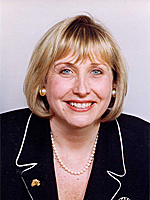 A message from Janice Burrill, LACGP Legislative Chair and National Liaison:
A message from Janice Burrill, LACGP Legislative Chair and National Liaison: 